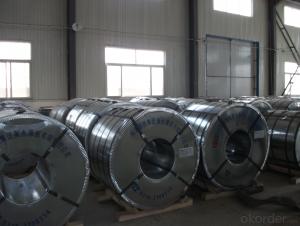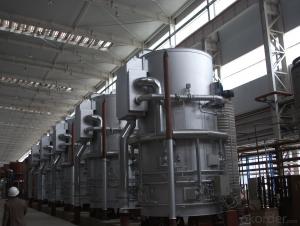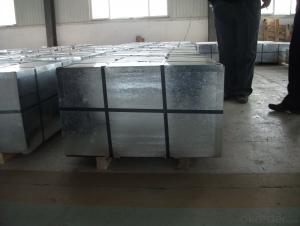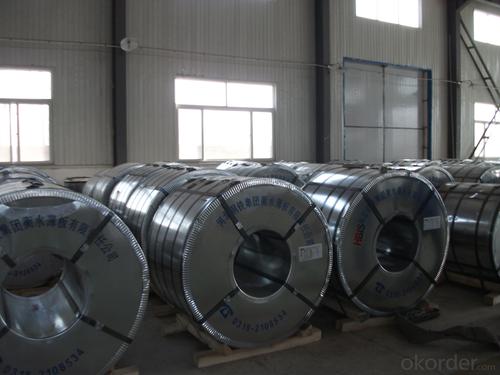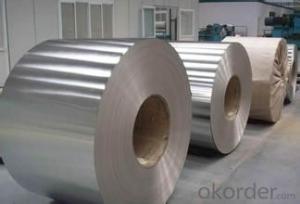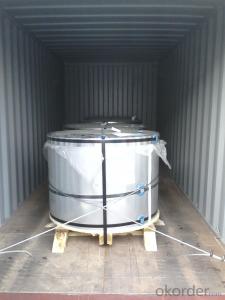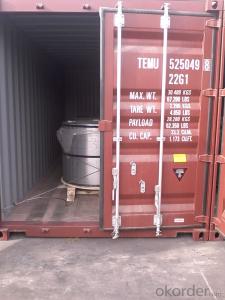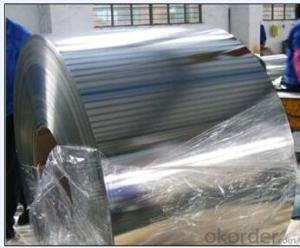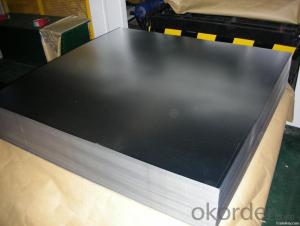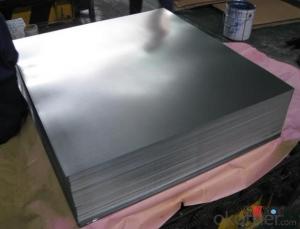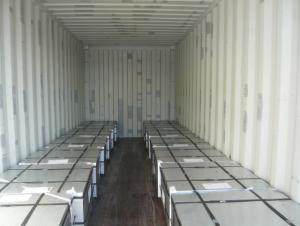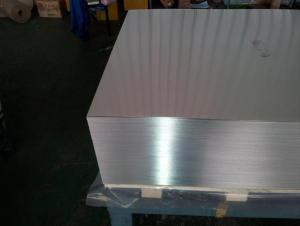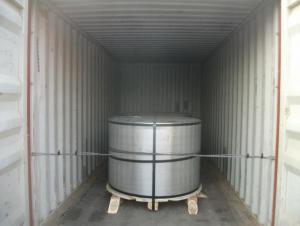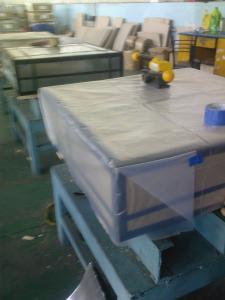Tinplate ETP for Milk Powder Cans
- Loading Port:
- Qingdao
- Payment Terms:
- TT or LC
- Min Order Qty:
- 25 m.t.
- Supply Capability:
- 30000 m.t./month
OKorder Service Pledge
OKorder Financial Service
You Might Also Like
1.Structure of Tinplate ETP for Milk Powder Cans Description
Electrolytic Tinplate is a thin steel sheet coated by tin. It has an extremely beautiful metallic luster as well as excellent properties in corrosion resistance, solder ability, and weld ability.
2.Main Features of the Tinplate ETP for Milk Powder Cans
Electrolytic Tinplate undoubtedly enjoys the pride of place as a packaging medium especially for food. It owes its unique position to its "nine layer sandwich structure", each of which contributes to its eminence as a packing material. The steel base of electrolytic tinplate provides the necessary strength and formability for can fabrication. The tin-iron alloy layer provides the bond between the steel and free tin layer. The free tin layer is not only responsible for the attractive bright finish and ease of solderability but is also non-toxic- a factor of vital importance in food packaging!
Tinplate is also widely used for making all types of containers such as food cans, beverage cans, and artistic cans, tea cans, painting cans, chemical package cans and dry food package cans, metal printing etc. Its applications are not limited to containers; recently, electrolytic tinplate has also been used for making electrical machinery parts and many other products.
3.Tinplate ETP for Milk Powder Cans Images
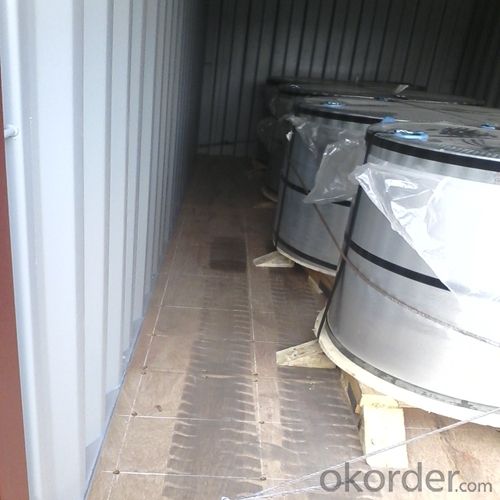
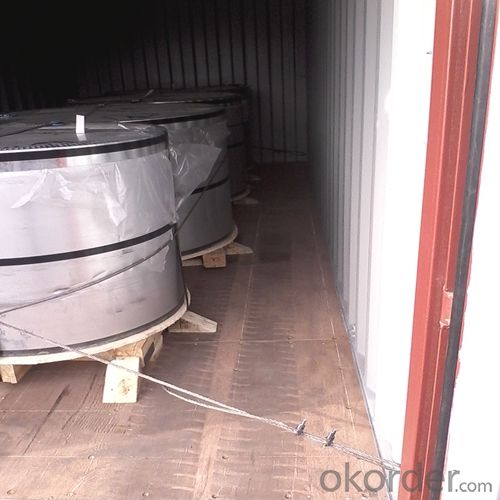
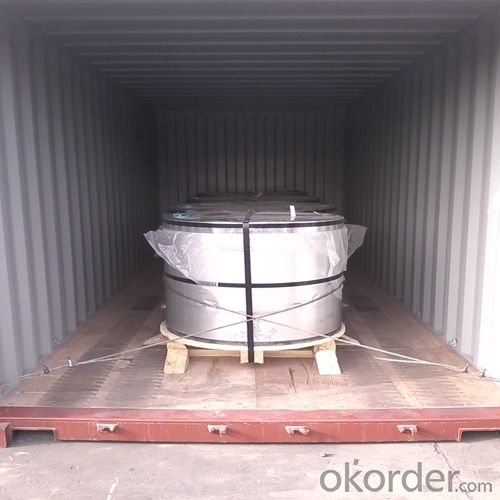
4.Tinplate ETP for Milk Powder Cans Specification
Standard: ISO 11949 -1995
Material: SPCC
Thickness:0.175mm
Width: 600mm
Temper: T4
Annealing:CA
Coil Inner Diameter: 508mm
Weight: 6-10 tons/coil 1~1.7 tons/sheets bundle
Passivation:311
Oil: DOS
Surface: Finish
5.FAQ of Tinplate ETP for Milk Powder Cans
1. What is the delivery time for your prime quality tinplate?
Usually 35 days after order confirmation.
2. What is your Minimum Order Quantity?
Usually MOQ is 50tons for one single size, for trial order, it can be 25 tons.
3. What is the payment term?
The most common we use is L/C at sight or TT. We can also try use other terms.
- Q: What are the main innovations in tinplate manufacturing?
- One of the main innovations in tinplate manufacturing is the development of continuous annealing technology. This process allows for a more efficient and precise heat treatment of tinplate, resulting in improved mechanical properties and better coating adhesion. Additionally, the introduction of advanced coating systems, such as chromium-free passivation, has provided a more sustainable and environmentally friendly option for preserving the tinplate's surface and enhancing its corrosion resistance. Moreover, advancements in printing and decorative techniques have enabled manufacturers to create more visually appealing tinplate designs, catering to the evolving demands of consumers.
- Q: What are the factors that affect the price of tinplate?
- The factors that affect the price of tinplate include the cost of raw materials, such as tin and steel, supply and demand dynamics in the market, fluctuations in currency exchange rates, government policies and regulations, and overall economic conditions. Additionally, factors like production and transportation costs, technological advancements, and environmental concerns can also impact the price of tinplate.
- Q: How is tinplate coated with protective lacquer?
- Tinplate is coated with a protective lacquer through a process called electrostatic spraying. The tinplate is first cleaned and degreased to ensure proper adhesion of the lacquer. Then, the lacquer is applied to the tinplate using an electrostatic spray gun, which charges the lacquer particles and attracts them to the metal surface. This creates a uniform and durable coating that provides protection against corrosion and enhances the tinplate's overall appearance.
- Q: How is tinplate coated for promotional items?
- Tinplate is typically coated for promotional items using a process called electrolytic tin plating. This involves immersing the tinplate into an electrolyte solution and passing an electric current through it, causing tin ions to be deposited onto the surface of the metal. This coating provides a protective barrier against corrosion and enhances the appearance of the tinplate, making it suitable for various promotional items.
- Q: How does tinplate affect the shelf life of products?
- Tinplate can significantly extend the shelf life of products due to its excellent barrier properties. It acts as a protective layer, preventing oxygen and moisture from reaching the contents of the package. This helps to preserve the quality, flavor, and nutritional value of the products, ultimately extending their shelf life and ensuring they remain fresh for a longer period of time.
- Q: How does tinplate affect the overall product shelf appeal?
- Tinplate enhances the overall product shelf appeal by providing a visually appealing and premium packaging solution. Its shiny and reflective surface adds a touch of sophistication and attractiveness, catching the attention of consumers. Additionally, tinplate's durability and strength protect the product, ensuring it remains intact and visually appealing throughout its shelf life.
- Q: Can tinplate be painted or printed on?
- Yes, tinplate can be painted or printed on.
- Q: How is tinplate tested for quality control?
- Tinplate is tested for quality control through various methods such as visual inspection, chemical analysis, and mechanical testing. Visual inspection involves checking for any defects or imperfections on the surface of the tinplate, ensuring it meets the required standards. Chemical analysis is performed to determine the composition of the tinplate, ensuring it contains the appropriate levels of tin and other alloying elements. Mechanical testing involves subjecting the tinplate to various stress tests to assess its strength, ductility, and resistance to corrosion. These quality control measures help ensure that tinplate meets the necessary standards for its intended use.
- Q: What industries use tinplate packaging?
- The industries that commonly use tinplate packaging include food and beverage, cosmetics, pharmaceuticals, and household products.
- Q: What are the differences in the corrosion behavior of two ferrous iron products?
- The name "tinplate" is not exact. Therefore, in 1973, when the Chinese tin plate meeting was called "tinplate", the official document no longer used the name "tinplate".
Send your message to us
Tinplate ETP for Milk Powder Cans
- Loading Port:
- Qingdao
- Payment Terms:
- TT or LC
- Min Order Qty:
- 25 m.t.
- Supply Capability:
- 30000 m.t./month
OKorder Service Pledge
OKorder Financial Service
Similar products
Hot products
Hot Searches
Related keywords
